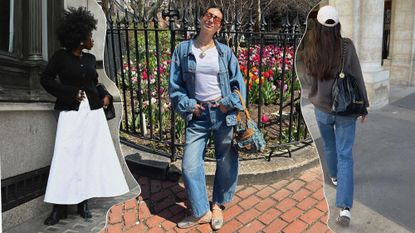Experience the Sophistication of Typical Eastern Attire
Embark on a trip with the detailed world of standard Eastern clothes, where each garment tells a story woven with cultural richness and historical importance. Join us as we decipher the tricks behind these charming items and find the appeal of Eastern clothes that has mesmerized generations. eastern wear pakistan.
History of Eastern Clothes
Eastern clothes has a rich history that goes back centuries, mirroring the diverse cultures and practices of areas such as Asia and the Center East. The clothing styles in these regions have actually been affected by various elements such as environment, faith, social standing, and historical events. In Asia, typical clothing varies greatly from the colorful saris used in India to the classy robe of Japan. In a similar way, the Middle East boasts a wide range of apparel designs, from the streaming abayas of Saudi Arabia to the elaborate kaftans of Morocco.
Throughout background, Eastern outfit has not just served as a type of clothing yet also as a sign of social identity and heritage. Today, Eastern attire continues to develop, mixing conventional components with modern fashion fads to develop unique and ageless designs.
Relevance of Embroidery
Needlework plays an important duty in conventional Eastern clothes, including intricate information and social relevance to garments that have actually been passed down with generations. In Eastern cultures, needlework is not just ornamental but holds deep symbolic significances. Each stitch and pattern can communicate stories, beliefs, and even social status.
The art of needlework in traditional Eastern outfit is a labor-intensive procedure that needs skill and persistence. Extremely knowledgeable artisans carefully hand embroider complex styles onto textiles using techniques that have been refined over centuries. These embroidered layouts typically mirror the abundant social heritage of the area they originate from, showcasing motifs motivated naturally, folklore, or historical occasions.

Elegant Fabrics Used
Extravagant fabrics play a crucial duty in boosting the beauty and opulence of typical attire throughout diverse Eastern societies. Silk, renowned for its softness and sheen, is a preferred option for lots of typical garments because of its extravagant feeling and ability to curtain beautifully. In countries like India, China, and Japan, silk has a long background of being utilized in typical clothes, symbolizing wide range and status.
One more widely used extravagant textile is brocade, identified by intricate patterns woven into the product. Brocade adds a touch of sophistication to garments and is typically seen in ceremonial attire and official wear. Velvet, with its luxurious appearance and rich appearance, is also a preferred selection for typical outfit in Eastern societies, specifically for cheery events and unique occasions.
In addition, chiffon, fabric, and satin are often made use of for their flowing and lightweight top qualities, including a feeling of special and sophistication to garments. These extravagant materials not only raise the aesthetic appeal of standard Eastern visite site attire but also add to the overall attraction and beauty of the user.
Workmanship Strategies
Conventional clothing in different cultures showcases flawless craftsmanship techniques that are passed down with generations, highlighting the skill and virtuosity associated with producing these elegant garments. Each decoration, needlework, and stitch is thoroughly crafted to produce ageless pieces that embody the social heritage and customs of the region. The workmanship methods utilized in typical Eastern clothing typically entail complex handwork, such as hand weaving, hand needlework, and hand beading, which Homepage call for precision and interest to detail.
Artisans who focus on these strategies undertake years of training to perfect their abilities and understand the conventional methods of garment building and construction. Making use of top quality products incorporated visit their website with professional workmanship results in garments that not just look visually stunning yet likewise stand the test of time. The devotion to maintaining these workmanship methods ensures that each item of conventional Eastern clothing is an artwork, mirroring the abundant cultural history and heritage of the area.
Timeless Sophistication and Beauty

The elaborate embroidery, delicate beadwork, and luxurious textiles made use of in traditional Eastern outfit contribute to its unmatched appeal. The careful workmanship passed down through generations ensures that every item exhibits and informs a tale class and elegance.
In addition, the classic silhouettes and stylish draping of conventional Eastern outfit contribute to its enduring beauty. The streaming lines and elegant styles produce a feeling of consistency and balance that is both visually attractive and mentally exciting.
In significance, the classic style and charm of typical Eastern outfit act as a testimony to the ability and virtuosity of the artisans that devote their lives to maintaining these splendid sartorial practices. - eastern wear pakistan
Verdict
To conclude, the beauty of typical Eastern clothes is a testimony to the abundant background, social significance, and complex workmanship of the region. From the fancy needlework to the luxurious fabrics and classic appeal, each garment tells a tale and reflects the social identity of its beginnings. Embracing Eastern outfit permits one to appreciate the virtuosity and style that have actually been given via generations, developing captivating and absolutely beautiful pieces.
Embark on a journey through the intricate world of conventional Eastern outfit, where each garment tells a tale woven with social splendor and historical significance.Embroidery plays an important role in conventional Eastern attire, including elaborate information and social value to garments that have been passed down with generations.Elegant materials play a crucial duty in boosting the sophistication and opulence of traditional clothing across diverse Eastern societies. The craftsmanship methods used in conventional Eastern clothing typically include elaborate handwork, such as hand weaving, hand needlework, and hand beading, which require accuracy and attention to information.
In final thought, the elegance of typical Eastern clothes is a testament to the abundant background, cultural value, and complex craftsmanship of the area.